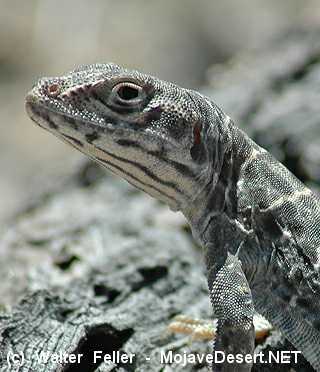--
Long-nosed Leopard Lizard
Gambelia wislizeniiThe long-nosed leopard lizard lives in dry desert areas like the Mojave, Sonoran, and Colorado deserts, plus some parts of California’s Central Valley. It likes open, flat land with sandy or gravelly soil, especially places with creosote bushes. You won’t find many of them in rocky areas. These lizards don’t show up until mid-April and disappear by mid-August, later and shorter than most other lizards in the desert.
Where and How They Live
Food:They eat mostly insects like grasshoppers and beetles, but they’ll also go after other lizards. Sometimes, they nibble on plants too.
Shelter:
They dig their own burrows in soft soil or take over rodent burrows.
Water:
They don’t need to drink water directly—they get what they need from their food.
Habitat:
These lizards live in open desert areas, especially where the soil is sandy or loose enough to dig into.
Daily and Yearly Habits
Activity:They’re out during the day. When it’s mild, they’re active all day, but when it gets hotter, they stick to mornings and evenings. Adults stop being active by August, and that’s when the babies hatch, likely to avoid getting eaten by the adults.
Home Range:
They can roam over several hectares but don’t seem to defend a specific territory.
Reproduction:
Mating happens in late April through mid-May. Eggs are laid in May or June, and babies hatch in August. They usually lay 5 to 6 eggs, but the number can range from 2 to 11. If the desert doesn’t get enough rain (which affects the number of insects around), they may skip breeding altogether.
Predators and Challenges
These lizards are hunted by rattlesnakes, coachwhip snakes, roadrunners, loggerhead shrikes, and even prairie falcons. If the desert goes through a dry spell and plants and insects are scarce, the lizards may not reproduce at all that year.|
The Desert Food Chain * Everything has its niche. Who eats what, and what eats who in the desert? Click here to find out what more. |

Long-nosed Leopard Lizard